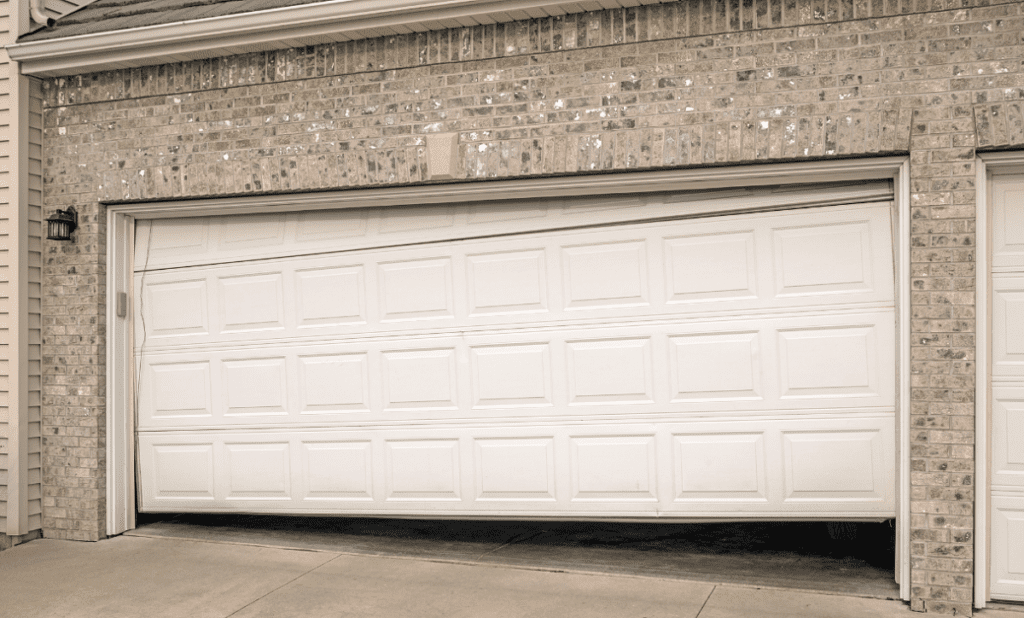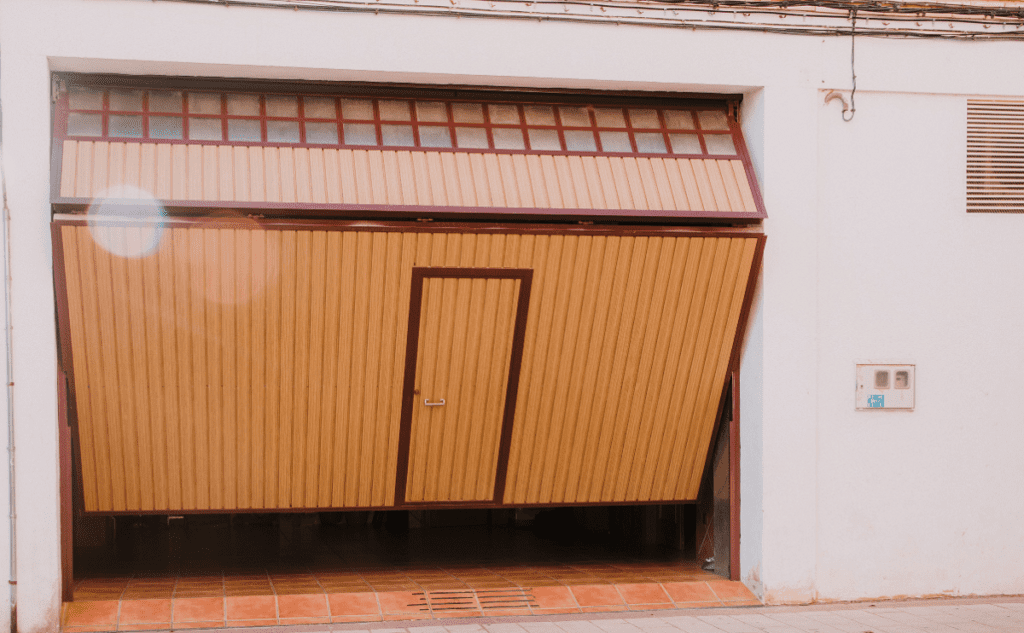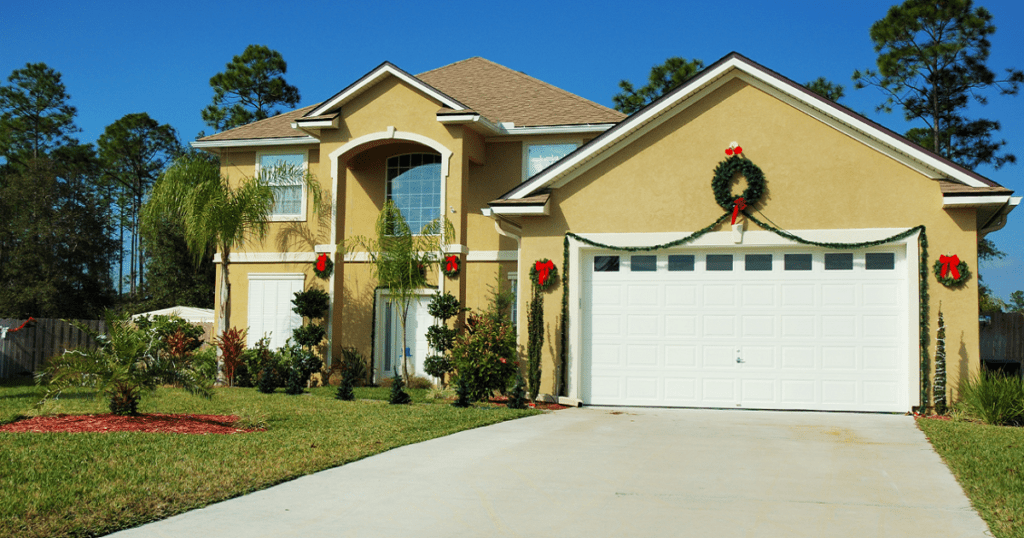
Garage door insulation and energy savings go hand in hand. Yet, many homeowners overlook this critical aspect of home insulation when considering ways to save money on heating and cooling costs. But what is the best way to insulate garage doors? In this article, we will discuss the benefits of insulating garage doors, factors to consider when choosing the right insulation materials and methods, and offer DIY tips for insulating your garage doors.
The Importance of Insulating Garage Doors
Garage doors are often one of the largest openings in a home. Without proper insulation, cold air seeps through in winter months while warm air escapes during summer months.
This can result in a significant loss of energy and an increase in heating and cooling costs. By insulating your garage doors, you can prevent these costly leaks that affect your home’s energy efficiency.
In addition to saving money on energy bills, insulated garage doors provide a number of other benefits for homeowners. These benefits include increased comfort in your home’s interior spaces, reduced noise pollution from outside sources such as traffic or noisy neighbors, improved durability for steel garage doors against harsh weather conditions, and enhanced curb appeal with an updated look for your garage door.
The Best Way to Insulate Garage Doors
When it comes to choosing the best way to insulate your garage doors, there are several factors that should be considered. The first factor is the type of insulation materials that are available for use with different types of garage doors, including roll-up or sectional styles. The second factor is whether you should hire professional garage door insulation services or opt for a DIY approach.
If you decide to take on the project yourself, there are several effective garage door insulation solutions available such as weatherproofing with foam board panels or reflective foil-faced bubble wrap material that can be attached to the inside of your garage door. Choosing the right insulation material for your garage door will depend on a number of factors, including the climate in your region, the R-value you need to achieve, and the cost of insulation materials.
If you are looking for ways to save money on energy bills and improve the overall comfort and efficiency of your home’s interior spaces, then insulating your garage doors is an essential step in this process. By choosing the best way to insulate your garage doors, you can maximize heat retention while minimizing energy loss and benefit from long-term cost savings that will pay off for years to come.
High-Level Overview
Different Types of Insulation Materials Available for Garage Doors
When it comes to choosing the best way to insulate your garage doors, you have several options available. The most common types of insulation materials used for garage doors include fiberglass batts, blown-in insulation, and reflective foil insulation.
- Fiberglass batts are a popular choice as they are relatively easy to install and offer an R-value ranging from 3.0 to 4.0 per inch. However, installing fiberglass batts can be challenging if you’re working with unconventional garage door shapes.
- Blown-in insulation is another option that offers high R-values and can easily conform to any shape or size of the door. However, it’s essential to note that blown-in insulation should be installed by professionals because it requires special equipment.
- Reflective foil insulation is an excellent choice for those who want a cost-effective solution without compromising on performance. They work by reflecting heat away from the door, thereby keeping the interior space cooler during hot seasons and warmer in colder months.
Comparison Between the Pros and Cons of Each Type
Factors to consider when insulating garage doors include cost-effectiveness, energy efficiency, ease of installation, durability, and soundproofing capabilities.
- Fiberglass batts are affordable but require some level of expertise in installation; they are also prone to sagging over time.
- Blown-in insulation is more expensive than fiberglass but offers better insulation properties; installation requires professional assistance due to its complexity.
- Reflective foil insulation is one of the most cost-effective options available in terms of upfront costs but may not offer as high R-values as other materials; however, reflective foils come pre-cut, making them easy to install even for beginners.
Maximizing heat retention with garage door insulation involves choosing an option that meets your budget while providing optimal insulation. Choose a material that offers high R-values and is easy to install if you plan on doing it yourself. If you’re unsure of the best option, seek professional garage door insulation services.
Each type of insulation has its pros and cons; fiberglass batts are the most affordable; blown-in insulation offers high R-values but requires professional installation, while reflective foil is cost-effective and easy to install but may not offer as high R-values as other materials. The best way to insulate your garage doors depends on your specific needs and budget constraints.
Detailed Explanation on How to Measure Your Garage Door for Insulation
Insulation Materials and R-Value
Before starting the insulation process, it’s important to measure your garage door correctly. The R-value of insulation material plays a significant role in determining its effectiveness.
It is recommended to choose an insulation material that comes with a higher R-value rating. Begin by measuring the width and height of all the panels, then multiply them together to get the total area.
Insulation for Wooden Garage Doors
Wooden garage doors require extra caution when it comes to adding insulation. Installing rigid foam or batt insulation is highly recommended, as they can be easily cut and trimmed according to size. Make sure you wear gloves and protective gear while handling fiberglass or cellulose insulation materials, as they can be hazardous.
Insulation for Steel Garage Doors
Steel garage doors are relatively easy to insulate due to their pre-existing metal frame structure. Foam board insulation can be used effectively on steel doors by inserting it into the panel gaps present within the door structure.
Step-by-Step Guide on How to Install Insulation onto Your Garage Door
DIY Tips For Insulating Your Garage Doors
Start by thoroughly cleaning your garage door before installing any type of insulation. Ensure that there are no dust particles or debris which may hamper the adhesion of foam boards or any other adhesive material you use. Start by measuring out and cutting pieces of foam board according to size, then carefully attach them to each section or panel of your garage door.
Professional Garage Door Insulation Services
If you’re short on time or if you don’t feel comfortable doing this yourself, there are a variety of professional services available that specialize in installing high-quality garage door insulation materials. They will measure your garage door for you, recommend the best insulation material and install it for you according to your preferences.
Tips and Tricks on How to Seal Gaps Around Your Garage Door for Maximum Efficiency
Improving Thermal Insulation of Your Garage Doors
Sealing gaps around your garage door can significantly improve its thermal insulation efficiency. Check for gaps in the weatherstripping around the edges of your garage door, as well as in between each panel if present. Apply caulk or adhesive foam strip seals to bridge these gaps and prevent cold air from seeping inside.
Enhancing Soundproofing with Garage Door Insulation
In addition to enhancing thermal insulation, adding an extra layer of insulation material can also help soundproof your garage. Sound transmission can be mitigated by selecting a dense insulation material like fiberglass blankets or rock wool batts that have higher density ratings.
Using double layers of such materials can also amplify the sound absorption effect. Insulating garage doors is an essential step towards achieving energy efficiency in a home, ultimately leading to cost savings on heating and cooling bills.
Proper planning before starting the project is crucial to ensure that you choose the right type of material for your specific needs and goals. Sealing up gaps around garage doors is equally important, as it helps prevent heat loss and maintain internal temperature levels in extreme weather conditions.
Rarely Known Small Details
Weatherstripping
Let me tell you something: Weatherstripping is the unsung hero of garage door insulation! It’s amazing how many people overlook the importance of properly sealing the gaps around their garage door.
But let’s be real; no matter how much insulation you put on your garage door, if there are gaps for air to escape through, it will render all that effort useless. Weatherstripping is an effective and cost-efficient solution for achieving optimal insulation coverage.
It creates a tight seal that prevents cold air from entering in the winter and hot air from seeping in during the summer months. And it’s incredibly easy to install too!
Just measure the length of your garage door and cut weatherstripping to size. Then, attach it to the bottom edge of your garage door with adhesive or screws.
For those concerned about aesthetics, fear not! Weatherstripping comes in various colors and materials that can complement any garage door type.
Reflective Foil
Reflective foil may not be as well-known as other types of insulation materials like fiberglass or foam board, but boy does it work wonders when used as an additional layer for insulation! When applied correctly (meaning with an air gap between itself and another layer), reflective foil can increase your garage door’s R-value by up to 1 point. This may not sound like much, but every little bit counts when it comes to optimizing energy efficiency in your home.
Plus, reflective foil is incredibly easy to install and relatively inexpensive compared to other types of insulation materials. It also has superior heat reflectivity properties, which means it will help keep heat out in the summer months.
Insulated Windows
It might surprise you how much-insulated windows can contribute towards overall efficiency levels when insulating a garage door. Even though they are smaller in size compared to the garage door itself, windows can still cause major heat loss and gain.
Insulated windows offer a solution for those who have concerns about energy waste or rising electricity bills. They are made with two or three panes of glass separated by a spacer, which is often filled with an insulating gas such as argon.
This design helps to keep your garage cooler in the summer and warmer during the winter months. Sure, insulated windows may cost you more upfront than regular windows, but the long-term benefits are worth it!
Not only will they contribute towards better insulation for your garage door, but they’ll also lower your energy costs over time. It’s a win-win situation that homeowners should seriously consider!
Frequently Asked Questions
What is the best way to insulate a garage door?
The best way to insulate a garage door is to use insulation panels or kits specifically designed for garage doors. These panels can be installed on the inside of the door and provide thermal insulation, helping to regulate temperature and improve energy efficiency.
What is the most cost-effective way to insulate a garage door?
The most cost-effective way to insulate a garage door is to use weatherstripping or sealant materials to seal any gaps or cracks around the door. This helps prevent drafts and reduce heat transfer, providing some level of insulation without the need for additional insulation panels.
How do I insulate my garage door to keep it cool?
To insulate a garage door and keep it cool, you can use reflective insulation or radiant barrier materials. These products reflect heat away from the door, helping to maintain a cooler temperature inside the garage. Additionally, sealing any gaps or cracks in the door and ensuring proper weatherstripping can further enhance insulation and keep the garage cool.
Should you put insulation on a garage door?
It is recommended to put insulation on a garage door, especially if the garage is attached to the house or used as a living space. Insulating the door helps regulate temperature, improve energy efficiency, and reduce heat transfer, creating a more comfortable environment and potentially saving on heating or cooling costs.
How do you insulate and soundproof a garage door?
To insulate and soundproof a garage door, you can use a combination of insulation materials and soundproofing techniques. Installing insulation panels designed for garage doors can provide thermal insulation while adding acoustic panels or soundproofing materials on the inside of the door can help reduce noise transmission. Sealing any gaps or cracks in the door and using weatherstripping can also contribute to soundproofing efforts.
Conclusion
Maximizing Heat Retention with Garage Door Insulation
Insulating your garage door has numerous benefits, including maximizing heat retention. By insulating your garage door, you can prevent heat from escaping and keep the cold air out. This not only helps regulate the temperature in your garage but also helps save money on energy bills.
However, not all insulation materials provide the same level of thermal resistance, so it’s important to choose wisely. Fiberglass and cellulose insulation are popular options for their ability to trap air and effectively insulate a space.
Enhancing Soundproofing With Garage Door Insulation
In addition to thermal benefits, insulating your garage door also has soundproofing benefits. If you live in a noisy neighborhood or have noisy hobbies like playing music or woodworking in your garage, insulating your garage door is a must.
The same materials that provide thermal resistance also absorb sound waves, making them excellent choices for soundproofing. Consider using acoustic foam panels or spray foam insulation for maximum noise reduction.
Optimizing Garage Door Insulation for Energy Efficiency
Choosing the best way to insulate your garage doors ultimately comes down to personal preference and budget constraints. However, there are factors to consider when optimizing for energy efficiency, such as R-value (a measure of thermal resistance), the type of material used (such as fiberglass or foam board), and sealing gaps and cracks around the edges of the door. These factors can impact how well-insulated your garage is overall, so it’s important not to skimp on quality.
Insulating different types of garage doors can have significant benefits when it comes to regulating temperature and reducing noise levels in your home. Cost-effective insulation options for garage doors include fiberglass batts or spray foam, while more expensive but superior options include reflective foil or closed-cell spray foam.
Regardless of the material chosen, it’s important to follow proper Garage door insulation installation techniques and seal gaps and cracks in garage doors to maximize energy efficiency. By taking the time to insulate your garage door, you’ll be able to enjoy a more comfortable living environment while also saving money on your energy bills.






